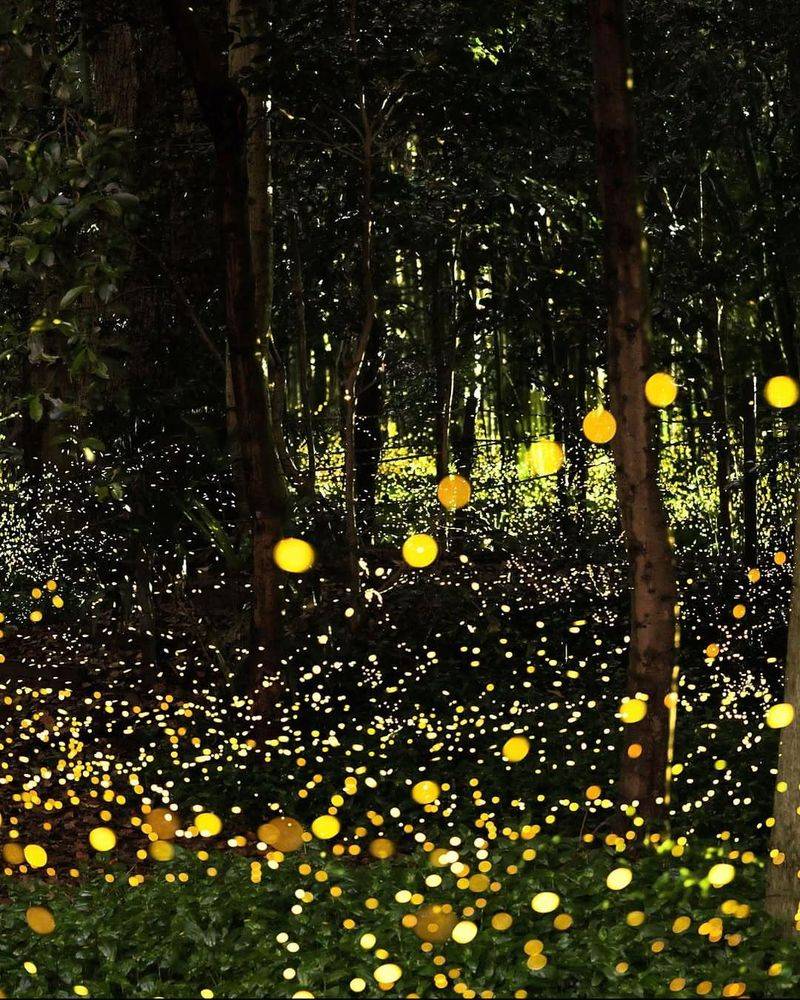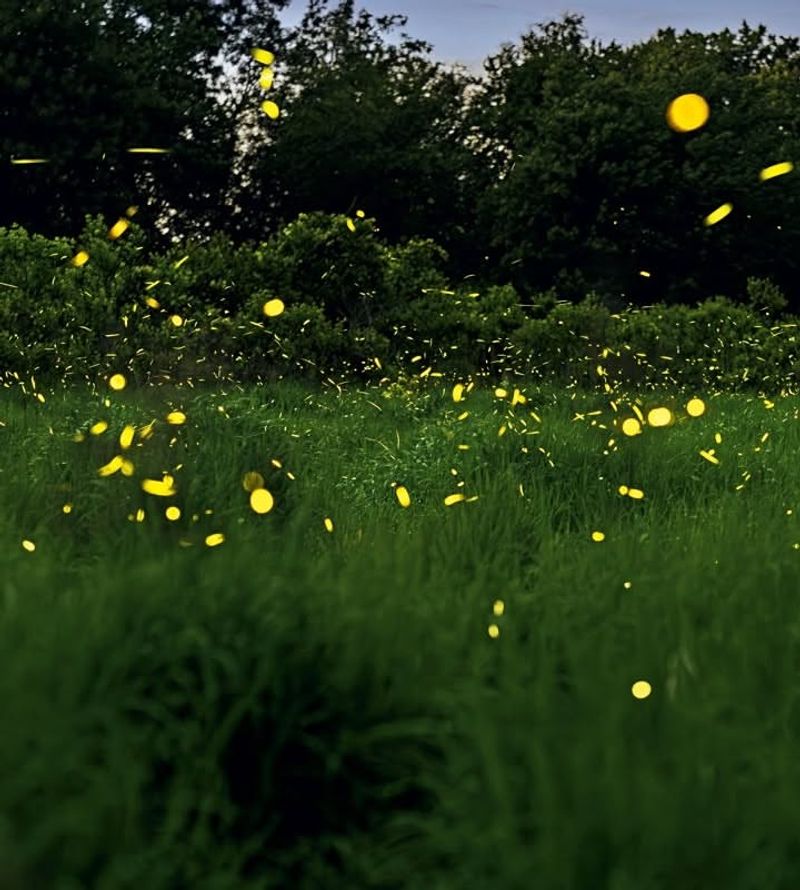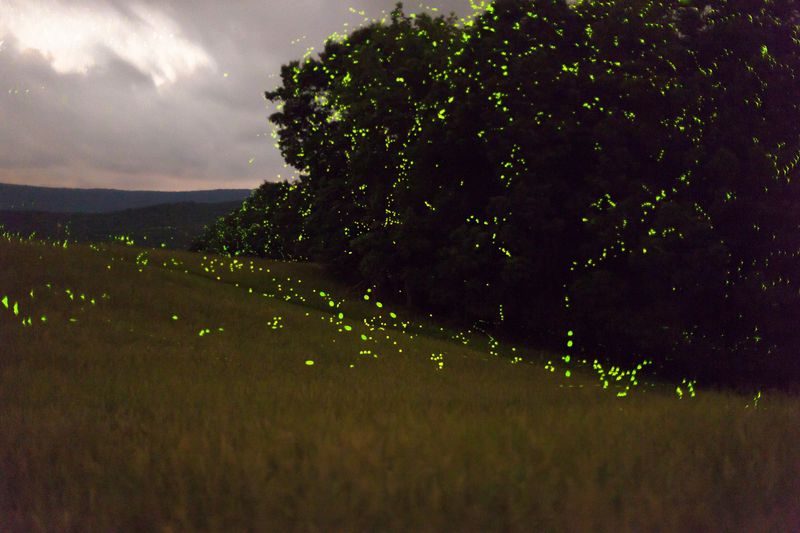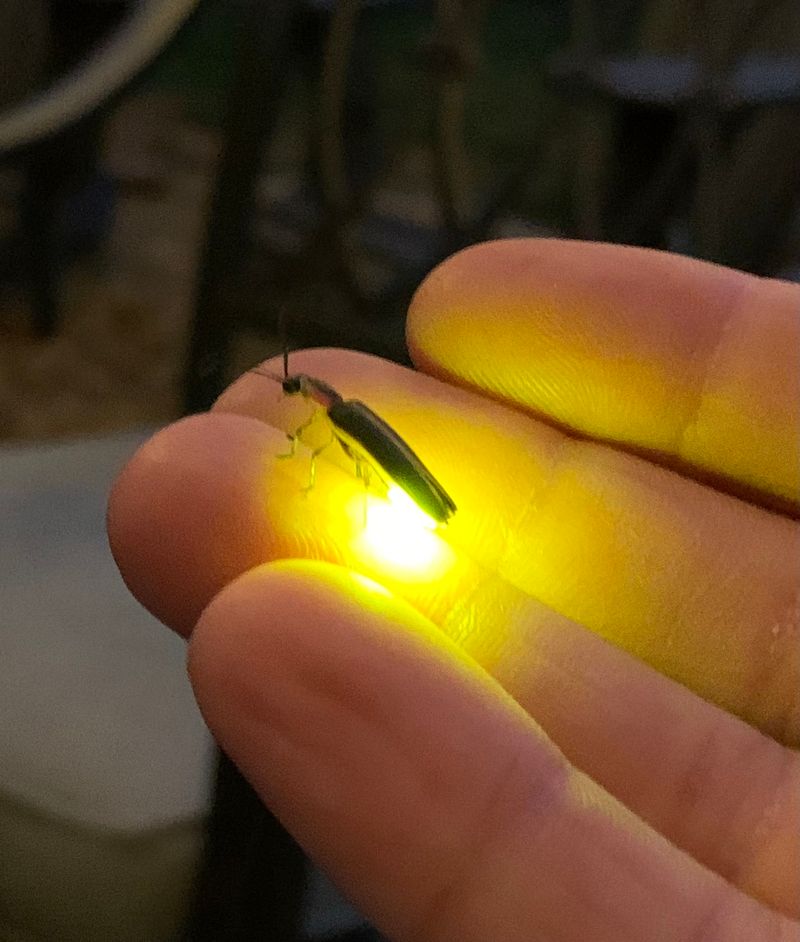West Virginia evenings used to feel alive with tiny flickers, and I still catch myself looking for them out of habit. It’s strange how quiet the yard feels now that those soft glows don’t drift around like they used to.
A few things have been pushing fireflies away, and some of them surprised me once I started paying attention. Let’s talk through what’s causing the change so the mystery doesn’t feel so frustrating anymore.
1. Light Pollution Disrupts Their Glow Signals
Bright streetlights, porch lights, and building lights are making it nearly impossible for fireflies to find each other in West Virginia. Male fireflies flash specific patterns to attract females, but artificial lighting drowns out these natural signals completely.
When fireflies can’t see each other’s glow patterns, they struggle to mate and reproduce. Towns and cities across the state have grown brighter over the years, pushing fireflies into darker, more remote areas.
Turning off unnecessary outdoor lights during summer evenings can help these insects communicate better and find mates successfully.
2. Pesticides and Chemicals Harm Firefly Populations
Homeowners and farmers in West Virginia often spray pesticides to control mosquitoes and other bugs, but these chemicals kill fireflies too. Firefly larvae live in the soil and leaf litter for up to two years before becoming adults.
When chemicals soak into the ground, they poison these young fireflies before they ever get a chance to light up the night sky. Even organic pesticides can be harmful to these sensitive creatures.
Choosing natural pest control methods and avoiding chemical sprays during firefly season helps protect these glowing insects throughout their entire life cycle.
3. Habitat Loss Destroys Their Homes
As West Virginia continues to develop new neighborhoods, shopping centers, and roads, firefly habitats are disappearing fast. Fireflies need specific environments like meadows, forest edges, and areas near streams to survive and thrive.
When developers clear land and replace natural spaces with buildings and pavement, fireflies lose the places they need to live and reproduce. Adult fireflies also need tall grass and plants where they can rest during the day.
Preserving wild spaces and creating firefly-friendly yards with native plants can give these insects the homes they desperately need.
4. Climate Change Affects Their Life Cycles
Shifting weather patterns across West Virginia are throwing firefly life cycles completely out of balance. Firefly larvae need moist soil to hunt for snails, slugs, and worms, which are their primary food sources.
Droughts dry out the ground, making it harder for young fireflies to find enough food to grow properly. Unusual temperature swings also confuse fireflies about when to emerge as adults.
If they come out too early or too late, they miss the chance to mate with other fireflies, causing population numbers to drop year after year in the state.
5. Mowing and Lawn Care Eliminates Breeding Grounds
West Virginia residents love keeping their lawns neat and trimmed, but this habit is accidentally destroying firefly breeding grounds. Firefly larvae live in unmowed grass, leaf piles, and natural ground cover where they hunt for food.
When people mow frequently and remove all the leaves and debris, they eliminate the habitat firefly babies need to survive. Short, manicured lawns offer no protection or food sources for these developing insects.
Leaving some areas of your yard wild with longer grass and leaf litter creates perfect spaces for fireflies to grow and flourish throughout the state.
6. Water Pollution Threatens Aquatic Firefly Species
Some firefly species in West Virginia live near or in water during their larval stage, making them especially vulnerable to pollution. Runoff from roads, farms, and residential areas carries harmful chemicals, fertilizers, and trash into streams and wetlands.
When water quality declines, firefly larvae cannot survive or find the aquatic prey they need to eat. Coal mining and industrial activities have also affected water purity in many parts of the state.
Protecting waterways by reducing chemical use and preventing runoff helps aquatic fireflies and countless other creatures that depend on clean water sources.
7. Lack of Public Awareness and Conservation Efforts
Many people in West Virginia simply don’t realize that fireflies are disappearing or that everyday actions can harm them. Without public education programs, residents continue practices that accidentally hurt firefly populations.
Schools, nature centers, and community groups rarely teach about firefly conservation or how to create firefly-friendly environments. When people understand the problem, they’re usually eager to help make changes.
Supporting local conservation programs, sharing information with neighbors, and teaching children about fireflies can spark the awareness needed to protect these beloved insects across the entire state.








